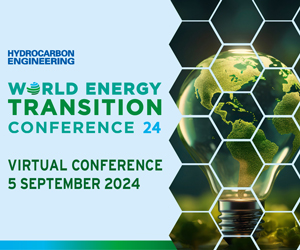The energy transition is gaining considerable momentum in India thanks to innovative projects.
Hitachi Energy plays a central role in this revolution by facilitating the transmission of renewable energy.
With cutting-edge infrastructure, 6 GW of green energy will be distributed through a 950 km HVDC system.
This ambitious project connects the Bhadla area in Rajasthan to Fatehpur in Uttar Pradesh, ensuring an efficient and reliable distribution of the generated energy. By integrating this advanced technology, India is getting closer to its goal of 500 GW of renewable energy, thus supporting the country’s economic growth. The capacity to supply energy to approximately 60 million households demonstrates the significant impact of this initiative on the daily lives of citizens.
Rajasthan Part I Power Transmission Limited, a subsidiary of Adani Energy Solutions Ltd. (AESL), has awarded a major contract to a consortium including Hitachi Energy and Bharat Heavy Electricals Limited (BHEL). This partnership aims to design and deploy high-voltage HVDC terminals to transmit the renewable energy produced at Bhadla to the industrial and transport hub in Fatehpur. This bipolar and bidirectional HVDC link of ±800 kV and 6 GW is an integral part of India’s interstate renewable energy transmission network.
By enabling the efficient evacuation of renewable energy and its connection to the national grid, AESL significantly contributes to the decarbonization of India. The use of the latest technologies ensures that the project will be completed on time while minimizing environmental impact. The robustness of the HVDC system is essential for managing the bidirectional flow of energy and ensuring grid stability, thus facilitating the rapid integration of renewables into the Indian energy mix.
Niklas Persson, CEO of the Grid Integration Division at Hitachi Energy, emphasizes the importance of this technology in achieving India’s national energy goals. With over 150 GW of integrated HVDC links globally, Hitachi Energy brings valuable expertise to ensure a sustainable and reliable energy supply. The Bhadla project includes the delivery of conversion transformers, AC/DC control and protection systems, as well as thyristor valves and connections to the 765 kV/400 kV grid.
HVDC transmission is crucial for integrating remote renewable energy sources into the power grid, meeting the growing demand for electricity and ensuring uninterrupted power quality across the country. Celebrating the 70th anniversary of HVDC technology in 2024, Hitachi Energy continues to be at the forefront of energy innovation, supporting India’s strategic ambitions for sustainable development.

“`html
Hitachi Energy selected for a 950 km HVDC transmission system in India
Hitachi Energy has been selected to design and deploy a high voltage direct current (HVDC) transmission system of 950 km in India, aiming to supply 6 GW of renewable energy. This ambitious project is part of India’s strategy to strengthen its energy infrastructure and promote clean energy sources.
what is Hitachi Energy’s HVDC project in India
The HVDC project from Hitachi Energy involves the installation of a 950 km link connecting the renewable energy area of Bhadla, located in Rajasthan, to Fatehpur in Uttar Pradesh. This link will transmit 6 GW of renewable energy, enough to power approximately 60 million households in India. By integrating this infrastructure into the national grid, the project aims to facilitate the efficient evacuation of the renewable energy produced in remote areas to industrial and residential centers.
The HVDC system employed by Hitachi Energy uses a bipolar and bidirectional technology of ±800 kilovolts (kV), ensuring efficient and stable energy transmission over long distances. This technological advance is essential to meet the growing energy demand and to support the country’s decarbonization goals.
the advantages of hvdc systems for renewable energy transmission
HVDC systems offer numerous advantages for the transmission of renewable energy. Unlike alternating current (AC) systems, HVDC allows for more efficient transmission over long distances with minimal losses. This increased efficiency is crucial for renewable energy projects, which are often located in remote areas far from consumption centers.
Moreover, the bidirectional nature of HVDC transmission allows for better management of power flow, thereby improving the stability of the electrical grid. This is particularly important in countries like India, where the massive integration of renewables requires robust infrastructure to maintain the balance between production and consumption.
Another key advantage is the flexibility of HVDC, which facilitates the interconnection of different power grids, even if they operate at different frequencies. This paves the way for increased international collaboration and electricity exchange between regions, thereby enhancing the resilience and reliability of the national power grid.
the impact of this project on India’s energy infrastructure
The HVDC project from Hitachi Energy represents a major milestone in the development of India’s energy infrastructure. By integrating 6 GW of renewable energy into the national grid, this project significantly contributes to the total capacity of clean energy in the country, supporting India’s ambitions to become a third global economic power.
This initiative is also part of India’s plan to achieve a total capacity of 500 GW of renewables. By facilitating the efficient evacuation of energy produced in resource-rich areas, the HVDC project helps to overcome challenges related to the geographical dispersion of energy production facilities.
Improving transmission infrastructure is essential to ensure a reliable and continuous energy supply. This meets the growing demand for electricity while reducing dependence on fossil energy sources and minimizing greenhouse gas emissions.
how Hitachi Energy contributes to the decarbonization of India
By deploying advanced HVDC transmission technologies, Hitachi Energy plays a crucial role in the decarbonization of the Indian energy sector. The ability to efficiently transport renewable energy helps to reduce dependence on fossil fuels, thereby contributing to the reduction of carbon emissions.
Niklas Persson, CEO of the Grid Integration Business Unit at Hitachi Energy, states: “Our HVDC technology is essential for enabling the seamless integration of renewables into the national grid. We are proud to support India in its transition to a cleaner and more sustainable energy future.”
Furthermore, the implementation of this HVDC project encourages innovation and the deployment of sustainable practices in the energy sector. The use of environmentally friendly technologies and the optimization of energy resources play a decisive role in long-term decarbonization efforts.
the economic and social implications of the project for the country
The HVDC project from Hitachi Energy is not limited to environmental benefits. It also has significant economic and social repercussions for India. The creation of this energy infrastructure stimulates local employment, promotes the development of technical skills, and strengthens the industrial capabilities of the country.
By facilitating access to a reliable and affordable energy source, the project also contributes to improving the quality of life for local populations. A stable energy supply is essential for the functioning of industries, healthcare services, education, and other vital sectors.
Moreover, investment in energy infrastructure strengthens India’s position in the global renewable energy market. By demonstrating its ability to manage large-scale projects, the country attracts more international investments and strengthens its strategic partnerships in clean energy.
the challenges and future prospects for the hvdc project in India
Despite its numerous advantages, implementing an HVDC project of this scale presents challenges. Coordination among various stakeholders, cost management, and ensuring infrastructure quality are critical factors to consider. However, with the expertise of Hitachi Energy, these obstacles can be overcome through rigorous planning and the use of advanced technologies.
In the future, this project could serve as a model for other similar initiatives in India and other developing countries. The widespread adoption of HVDC technologies could transform the global energy landscape, facilitating a quicker transition to renewable and sustainable energy sources.
To learn more about innovative energy projects, check out this article on why the United States is hiding gigantic renewable energy projects.
Articles similaires
Thank you!
We will contact you soon.














